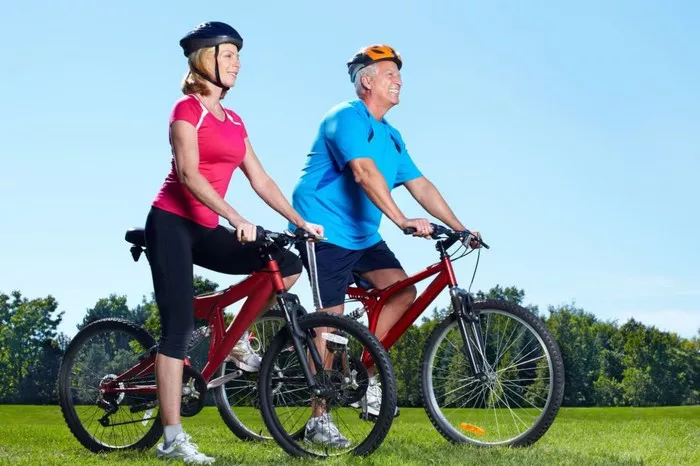Choosing the right bike as a beginner can be overwhelming. With so many options available, it’s important to know what to look for. This guide will help you understand the different types of bikes, their features, and what to consider when making your choice.
Understanding the Different Types of Bikes
Road Bikes
Road bikes are designed for speed on paved surfaces. They have lightweight frames, narrow tires, and drop handlebars. If you plan to ride primarily on roads and want to cover long distances, a road bike might be the best choice.
Mountain Bikes
Mountain bikes are built for off-road riding. They have wide tires, sturdy frames, and a more upright riding position. If you enjoy trails and rough terrain, consider a mountain bike.
Hybrid Bikes
Hybrid bikes combine features of both road and mountain bikes. They have a comfortable seating position and can handle a variety of terrains. This makes them a great option for beginners who want versatility.
Cruisers
Cruiser bikes are designed for comfort and leisure riding. They have wide seats, balloon tires, and a relaxed riding position. If you plan to ride casually around the neighborhood or on the beach, a cruiser bike may be ideal.
Key Features to Consider
Frame Size
Finding the right frame size is crucial for comfort and control. A bike that is too big or too small can lead to discomfort and difficulty in handling. Here’s a simple guide for frame sizes:
Road Bikes: Measure your inseam (inside leg) and multiply by 0.67 to find the ideal frame size in centimeters.
Mountain Bikes: Measure your height and use the following general sizes:
- 5’0” to 5’4”: Small (13-15 inches)
- 5’5” to 5’9”: Medium (15-17 inches)
- 5’10” to 6’1”: Large (17-19 inches)
Gearing
Bikes come with different gearing options. Beginners may prefer bikes with a wide range of gears to help tackle various terrains. Mountain bikes typically have more gears, while road bikes may have fewer but more efficient options.
Brakes
Brakes are essential for safety. There are two main types of brakes:
Rim Brakes: These are common on road bikes and are lighter but may not perform as well in wet conditions.
Disc Brakes: These provide better stopping power and are found on many mountain bikes and hybrid bikes. They perform well in all weather conditions.
Tires
The type of tires affects the bike’s performance. Here’s a breakdown:
Narrow Tires: Found on road bikes, these are best for speed on pavement.
Wide Tires: Mountain bikes have wider tires for better grip on rough surfaces.
Semi-Slick Tires: These are used on hybrid bikes, offering a balance between speed and stability.
Budget Considerations
Entry-Level Bikes
For beginners, it’s advisable to start with an entry-level bike. These bikes typically range from $300 to $800. They are built with quality components that are sufficient for casual riding.
Mid-Range Bikes
If you have a higher budget, consider mid-range bikes priced between $800 and $1,500. These bikes often come with better components and more features, making them suitable for more serious riding.
Second-Hand Options
Buying a second-hand bike can be a great way to save money. Check local classifieds, bike shops, or online marketplaces. Make sure to inspect the bike for any damage or wear before purchasing.
Test Riding Bikes
Before making a purchase, always test ride different bikes. This will help you understand what feels comfortable and suits your riding style. Here are a few tips for test riding:
Comfort: Pay attention to how the bike feels. Can you reach the handlebars easily? Is the seat comfortable?
Handling: Ride on different surfaces if possible. Test how the bike handles corners and rough patches.
Braking: Ensure the brakes respond well and feel safe.
Additional Accessories
Helmet
Safety should always be a priority. Invest in a good-quality helmet that fits well. A properly fitted helmet can prevent serious injuries in case of an accident.
Lights
If you plan to ride at dawn or dusk, lights are essential for visibility. A bright front light and a red rear light will make you more visible to drivers.
Lock
Protect your investment by buying a good lock. U-locks are generally more secure than cable locks.
Water Bottle and Cage
Stay hydrated while riding. A water bottle cage can be mounted on the bike frame for easy access.
Maintenance Tips
Regular Cleaning
Keeping your bike clean will prolong its lifespan. Wipe down the frame and clean the chain regularly.
Tire Pressure
Check your tire pressure before every ride. Properly inflated tires improve performance and reduce the risk of flats.
Brake Check
Ensure your brakes are functioning properly. Test them before each ride to make sure they respond quickly.
Chain Lubrication
Lubricate the chain every few weeks, especially if you ride frequently. This will help the bike shift smoothly and extend the life of the chain.
Choosing the Right Bike Shop
When purchasing a bike, choose a reputable bike shop. A good shop will offer:
Knowledgeable Staff: They can provide valuable advice and help you find the right bike.
After-Sales Service: Look for a shop that offers maintenance services.
Test Rides: A good shop will allow you to test ride multiple bikes.
Conclusion
Choosing the best bike for beginners doesn’t have to be a daunting task. By understanding the different types of bikes, key features, and what to look for, you can make an informed decision. Always test ride different models, consider your budget, and prioritize safety with the right accessories. With the right bike, you’ll be ready to enjoy the thrill of cycling in no time!
Happy riding!
Related topics:
- What to Do Before Cycling
- The 5 Best Power Meters for Cycling
- What Are the Benefits of Riding a Stationary Bicycle?

